A is for Animals
A is for Animals offers an A to Z of animals in war, from mascots and messengers to creepy-crawlies. Animals are put to many uses in war. Sometimes they have jobs to do: the horses, camels, mules, and donkeys used to transport soldiers and equipment, as well as carrier pigeons and tracker dog with their special talents. Often animals are used as mascots and pets, or as symbols on badges and flags. A is for animals also looks at those unwelcome animals, such as insects, rats, and wild creatures, that make life in the field even more difficult and dangerous.
The exhibition has been developed with a young audience in mind, but visitors of all ages will enjoy its fascinating and moving stories.
The book M is for Mate which was put together as part of this exhibition was shortlisted for the 2010 Children's Book Council, Book of the Year - Eve Pownall Award.
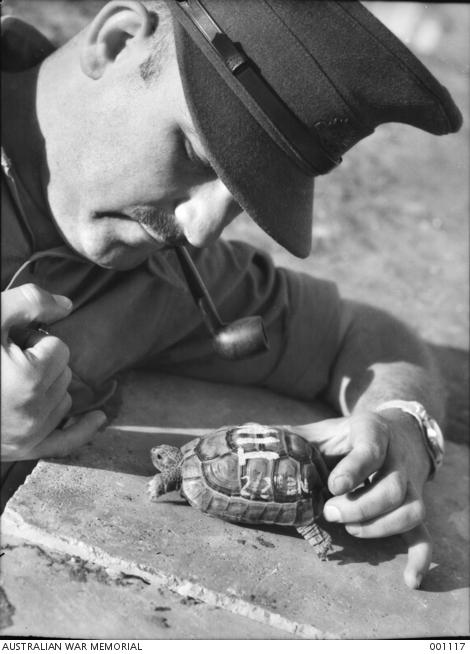
Captain Michelson with Tim the turtle
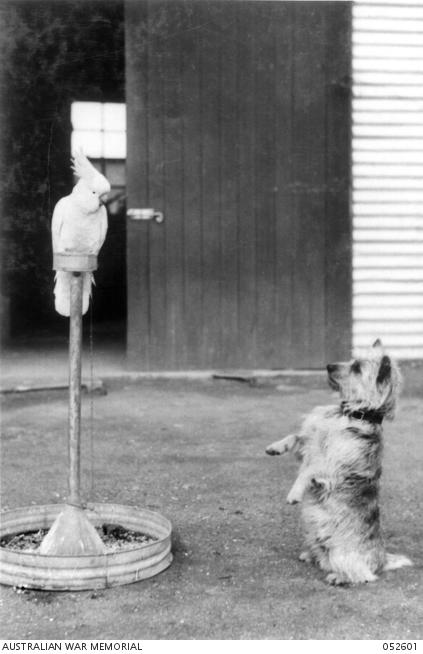
"Whacko" the parrot and "Cobber" the dog
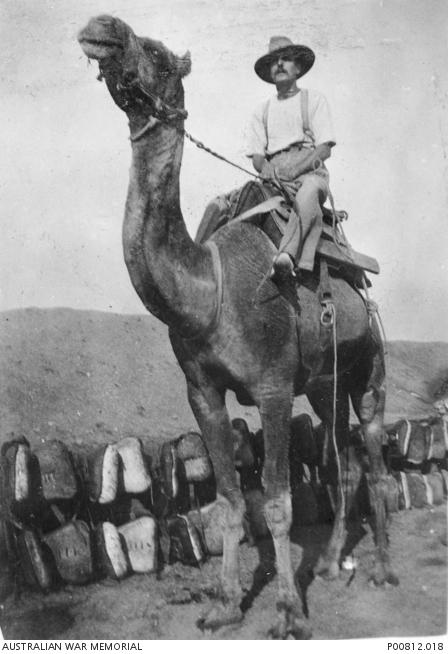
Corporal Holland and camel.
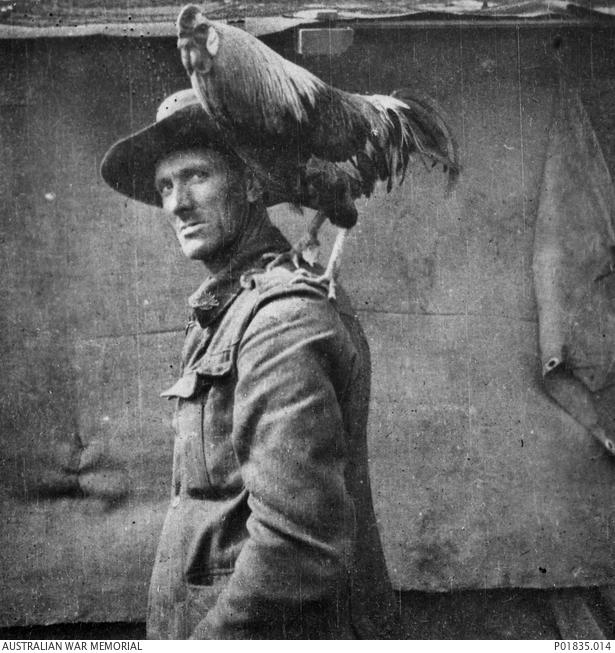
Driver Farrell with 'Jack'

Mrs Sweazy and a barn owl
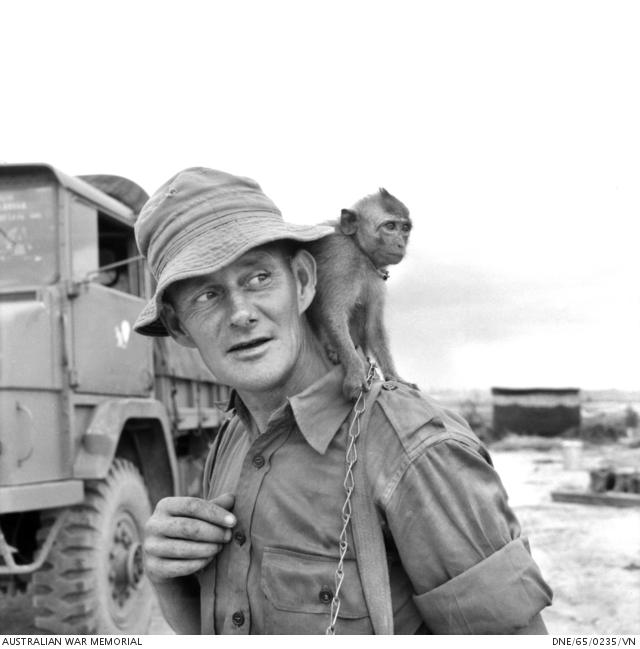
A young monkey with Corporal Elder
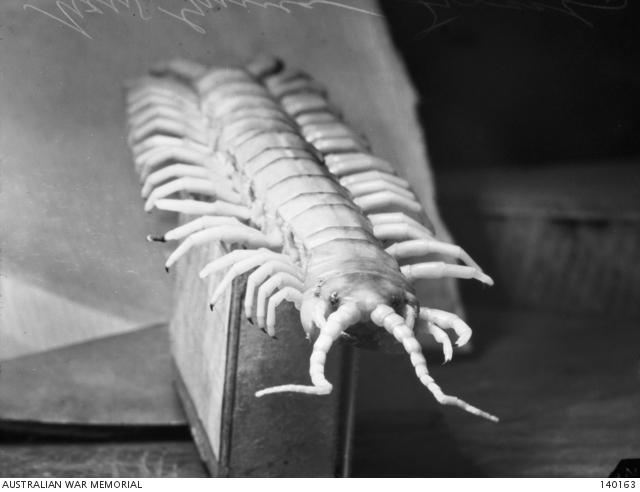
A centipede from New Guinea
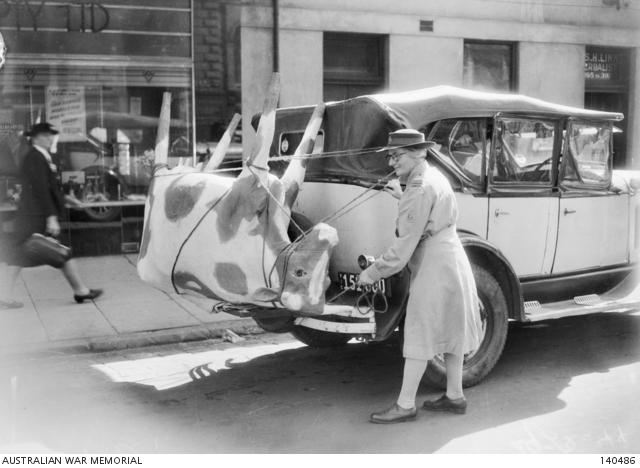
A papier-mache cow on Mrs Mellor's car.
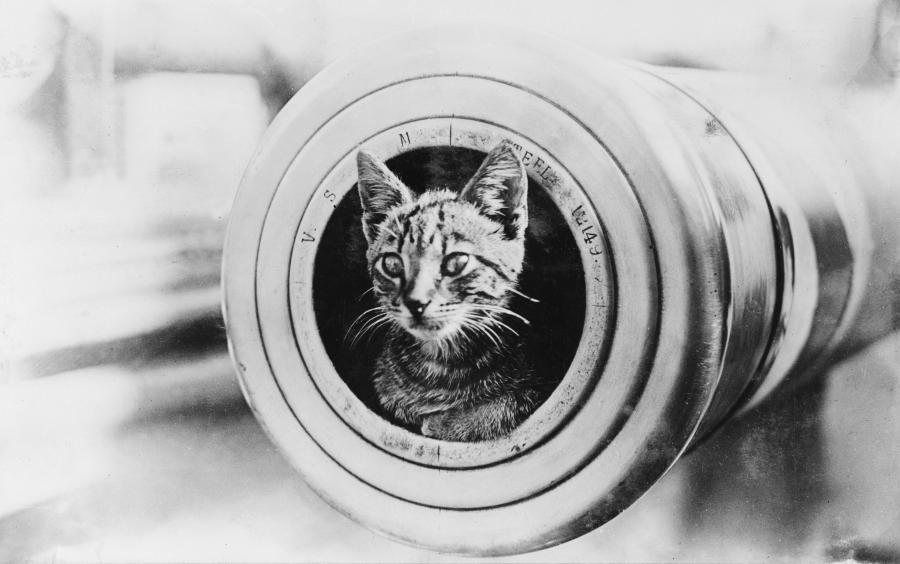
HMAS Encounter's mascot in the muzzle of a 6 inch gun.
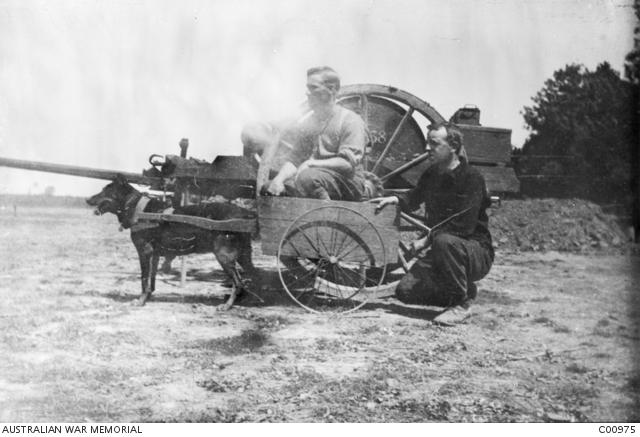
A German messenger dog captured by Australians in 1918.
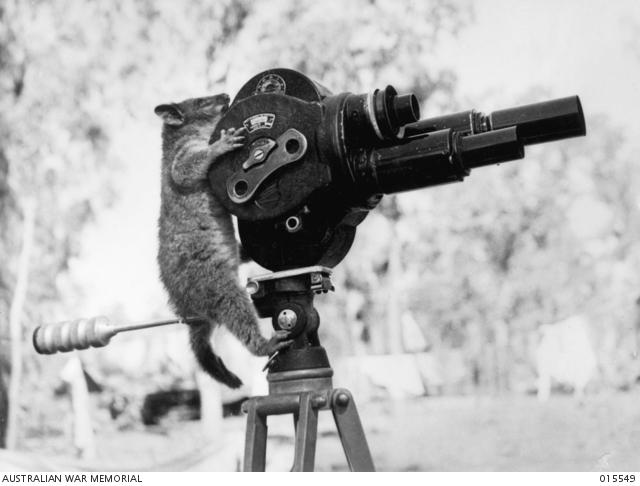
A pet ring tailed possum examines Department of Information movie camera.
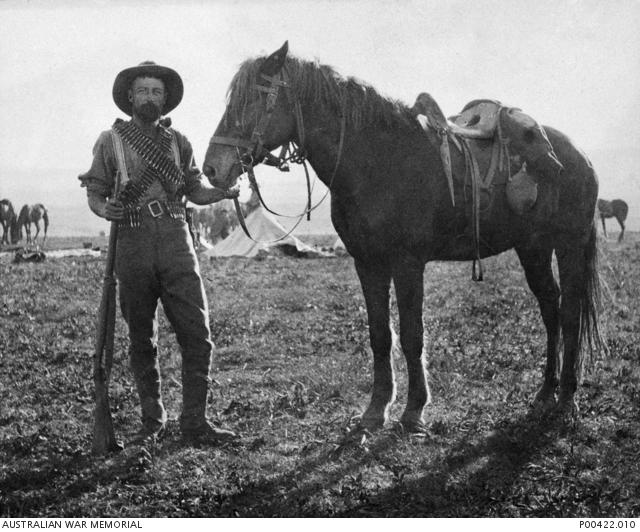
Australian trooper with horse in South Africa, 1901.
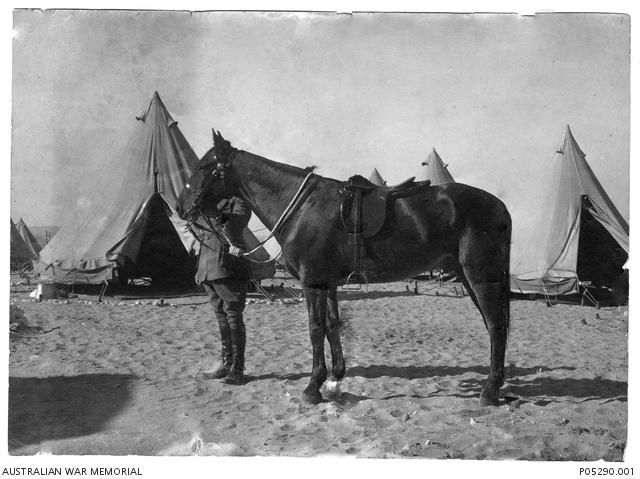
Major General Sir Bridges and Sandy the horse
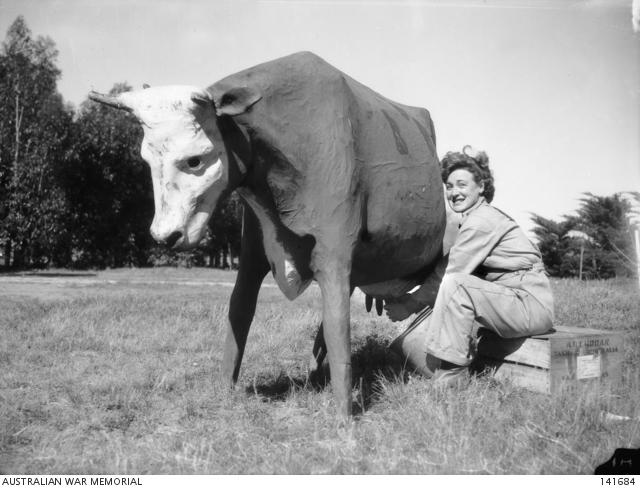
Learning to milk on a dummy cow made of papier-mache.
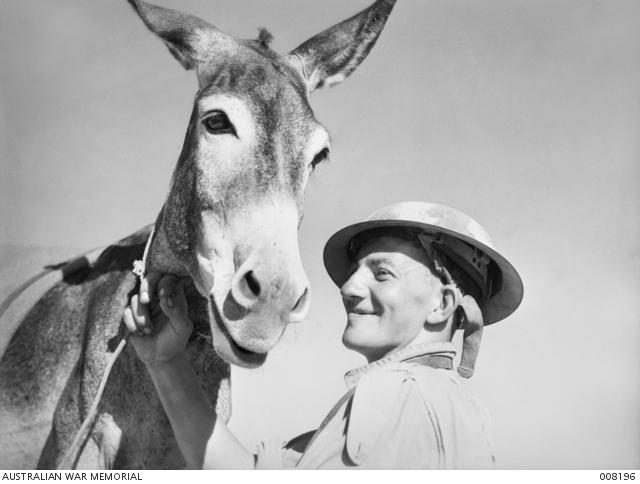
The Pte. D.W. Jones with a donkey.
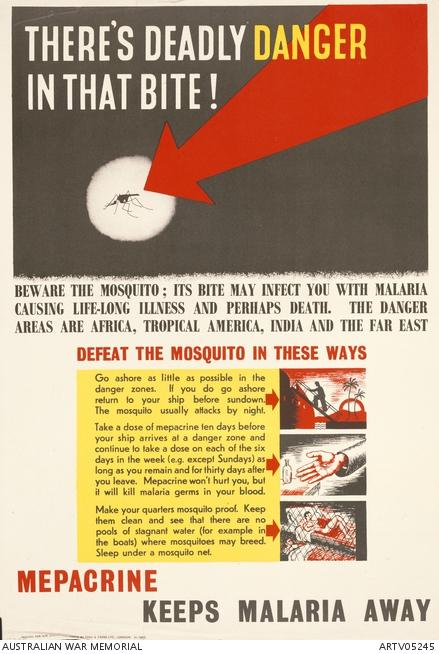
British Second World War poster about the danger of malaria.
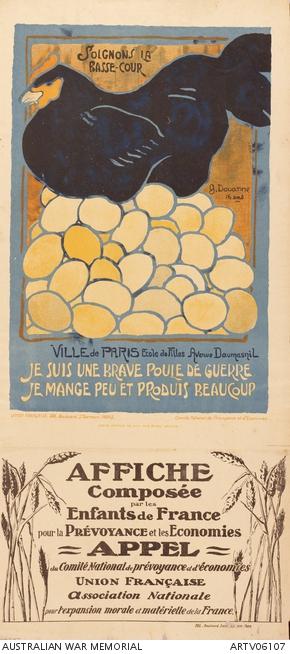
A French poster about chickens and their benefits.
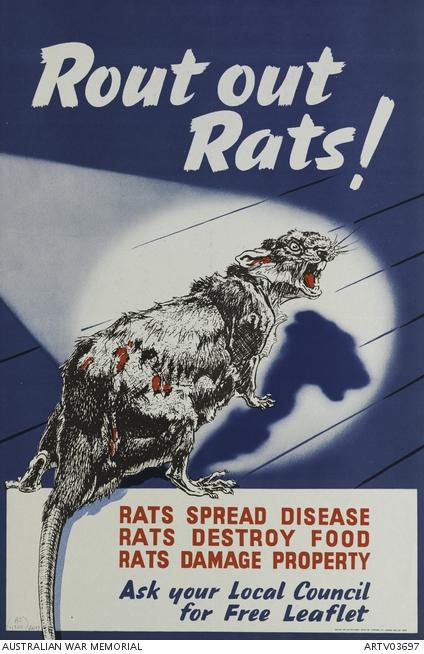
A British poster about vermin control.
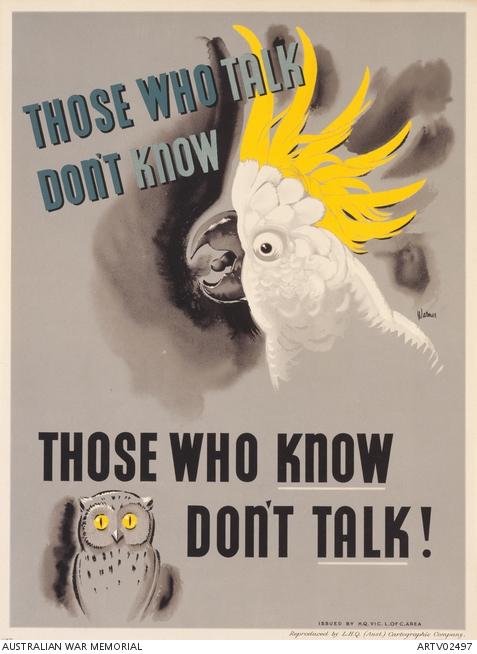
A poster reminding people of the dangers of loose talk.
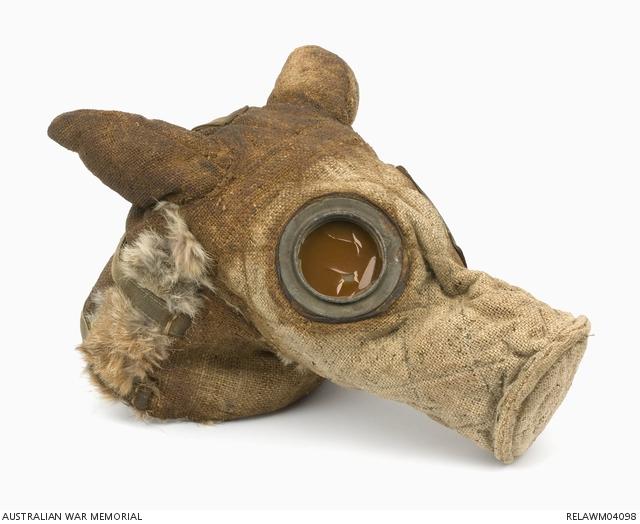
A gas mask for a dog c 1916-1918.
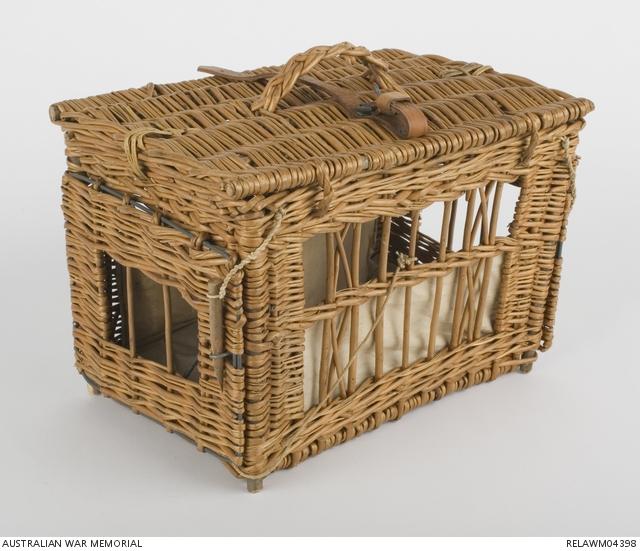
A pigeon on a two bird pigeon trench basket.
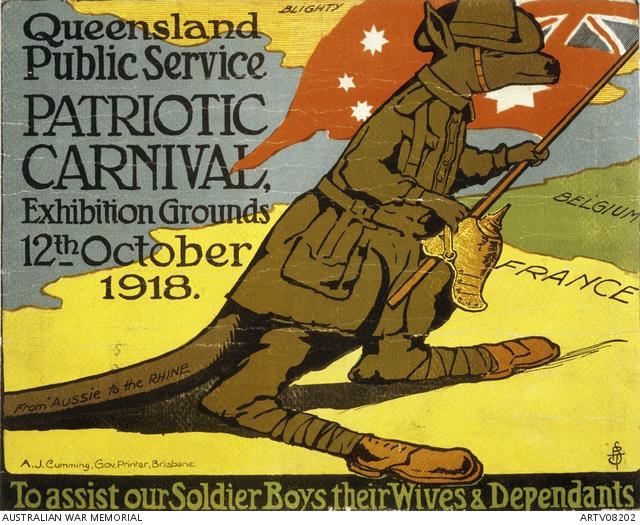
A poster advertising a carnival with a kangaroo dressed as a soldier
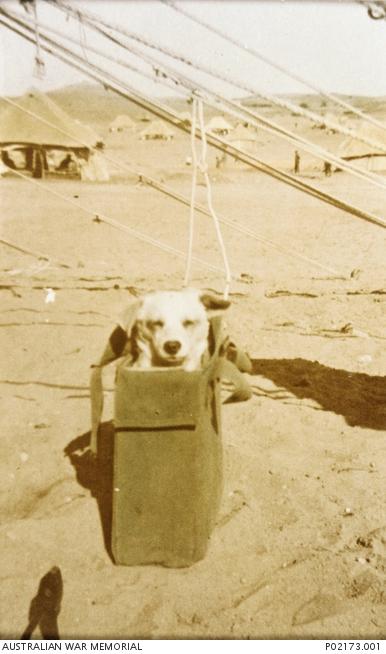
Horrie, the "Wog Dog", mascot of the 2/1st Machine Gun Battalion
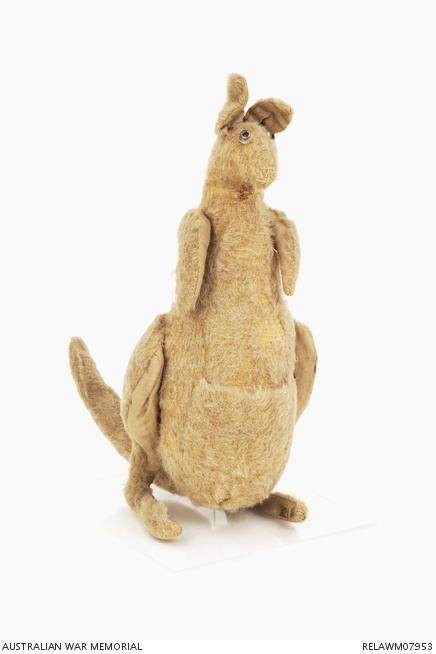
A soft toy kangaroo.
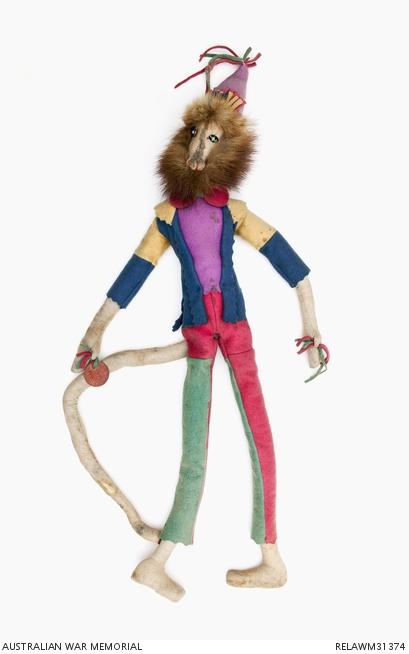
"Monk II", a handmade monkey doll.